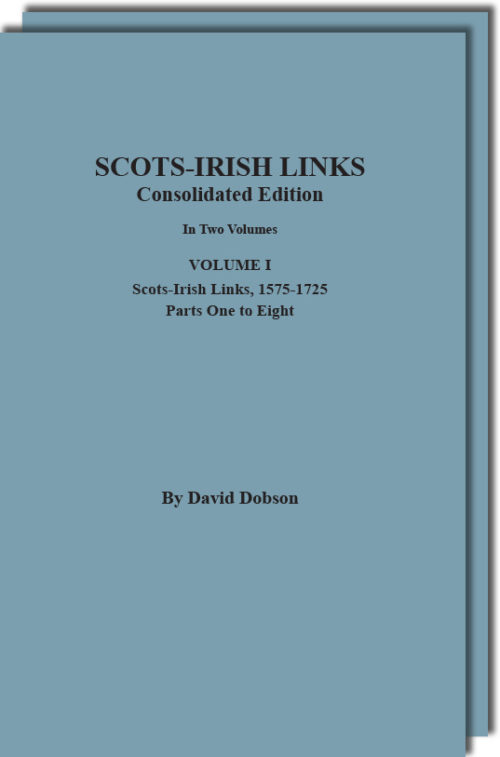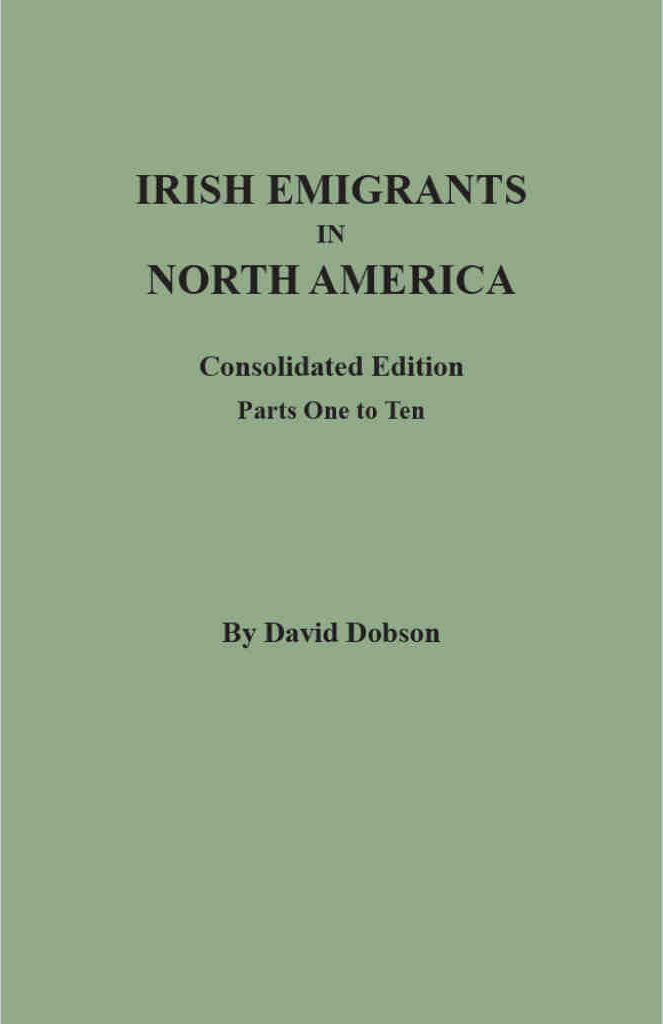
Over the last year and a half, Genealogical.com has consolidated two series of books by Dr. David Dobson that were originally published in multiple installments.
The first of these was Scots-Irish Links, 1525-1825: Consolidated and Indexed Edition. In Two Volumes, originally published in 15 parts but lacking an index. To rectify these shortcomings, we re-numbered all the original books in a single numerical sequence and attached a full-name index to the back of each of the two consolidated volumes, providing the reader with an easy way of identifying everyone found therein. Many of the persons so identified were young men from Ireland–many bearing Scottish surnames–attending universities in Scotland. Still other Scots-Irish links were apprentices, ministers, merchants, weavers, teachers, or persons in flight. In a number of cases Dr. Dobson is also able to provide information on the man or woman’s spouse, children, local origins, landholding, and, of course, the source of the information. While there is no certainty that each of the persons identified in these volumes, or their descendants, ultimately emigrated to America, undoubtedly many did or possessed kinsmen who did.
This spring, we introduced the one-volume Consolidated edition of the ten-part series, Irish Emigrants in North America. As with the Scots-Irish work above, we have added a comprehensive index of names to facilitate the reader’s search through all ten Parts. Moreover, the index identifies the many other Irish persons named in the emigrant profiles who could be overlooked by merely consulting the alphabetical arrangement of emigrants.
The author has arranged this list of roughly 8,500 emigrants alphabetically in each of the ten parts of this work by the individual’s surname and, in the majority of cases, provides most of the following particulars: age, name of ship, occupation in Ireland, reason for and the source of the information. Sometimes the entries also specify the emigrant’s place of origin in Ireland, place of disembarkation in the New World, date of arrival, and names or number of other persons in the household.
It is important to mention that there are connections to be made between these two works. About 95% of the individuals named in Irish Emigrants in North America left the Emerald Isle before the Great Famine of the 1840s, and at least half of them are of Scots-Irish provenance—the basis for the earlier two-volume consolidation. This raises questions like this one: Is the Robert Ramsey, who emigrated from Londonderry for Philadelphia in 1785, or the William Ramsey, who departed from Belfast for New Castle, Delaware, in 1789 a descendant of the Andrew Ramsey, who filed a will in Derry in 1721, or the Andrew Ramsey, who was master of the vessel, Providence of Saltcoats in Belfast in 1686? Additional research may provide the answer to these and numerous other possible connections between the people in the two consolidated works, BUT THE CLUES, the all-important starting points, are here.






